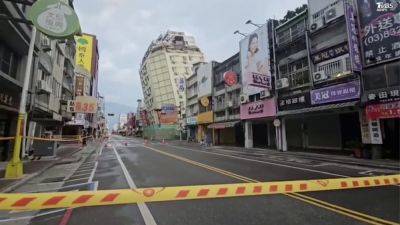Why is Taiwan so exposed to earthquakes and so well prepared to withstand them?
TAIPEI, Taiwan (AP) — Taiwan was struck Wednesday by its most powerful earthquake in a quarter of a century. At least nine people were killed and hundreds injured, buildings and highways damaged and train service interrupted.
Taiwan is no stranger to powerful earthquakes yet their toll on the high-tech island’s 23 million residents has been relatively contained thanks to its excellent earthquake preparedness, experts say.
Here is a closer look at Taiwan’s history of earthquakes:
WHY SO MANY TEMBLORS?
Taiwan lies along the Pacific “Ring of Fire,” the line of seismic faults encircling the Pacific Ocean where most of the world’s earthquakes occur.
The area is particularly vulnerable to temblors due to the tension accumulated from the interactions of two tectonic plates, the Philippine Sea Plate and the Eurasian Plate, which may lead to sudden releases in the form of earthquakes.
The region’s mountainous landscape can magnify the ground shaking, leading to landslides. Several such landslides occurred on Taiwan’s eastern coast near the epicenter of Wednesday’s quake near eastern Hualien County, when falling debris hit tunnels and highways, crushing vehicles and causing several deaths.
HOW WELL-EQUIPPED IS TAIWAN TO HANDLE QUAKES?
Wednesday’s earthquake measured 7.2, according to Taiwan’s earthquake monitoring agency, while he U.S. Geological Survey put it at 7.4. It damaged several buildings in Hualien but caused only minor losses in the capital Taipei despite being strongly felt there.
The earthquake hit in the middle of the morning rush hour yet only slightly derailed the regular commute. Just minutes later, parents were again walking their children to school and workers driving to offices.
“Taiwan’s earthquake preparedness is





